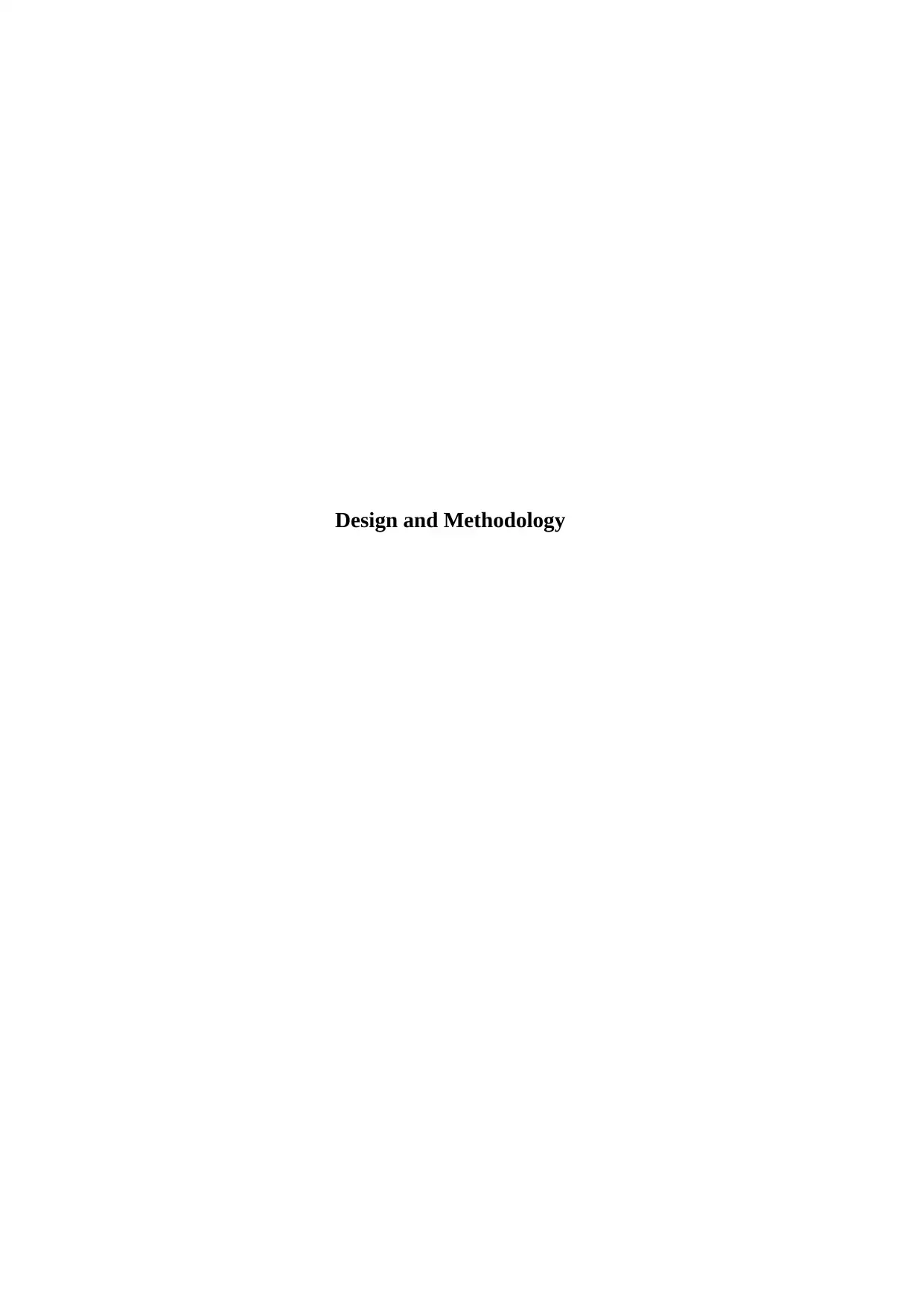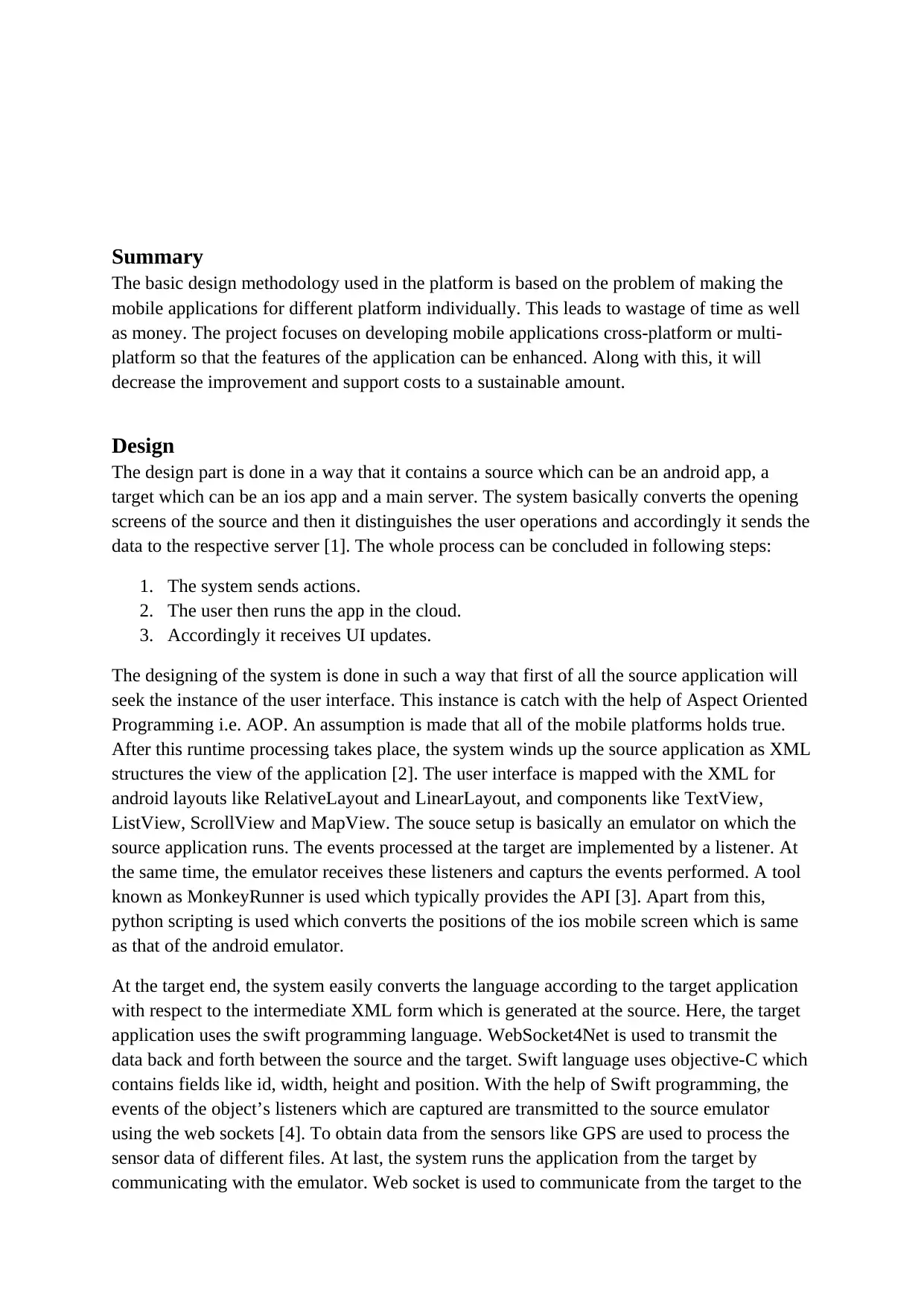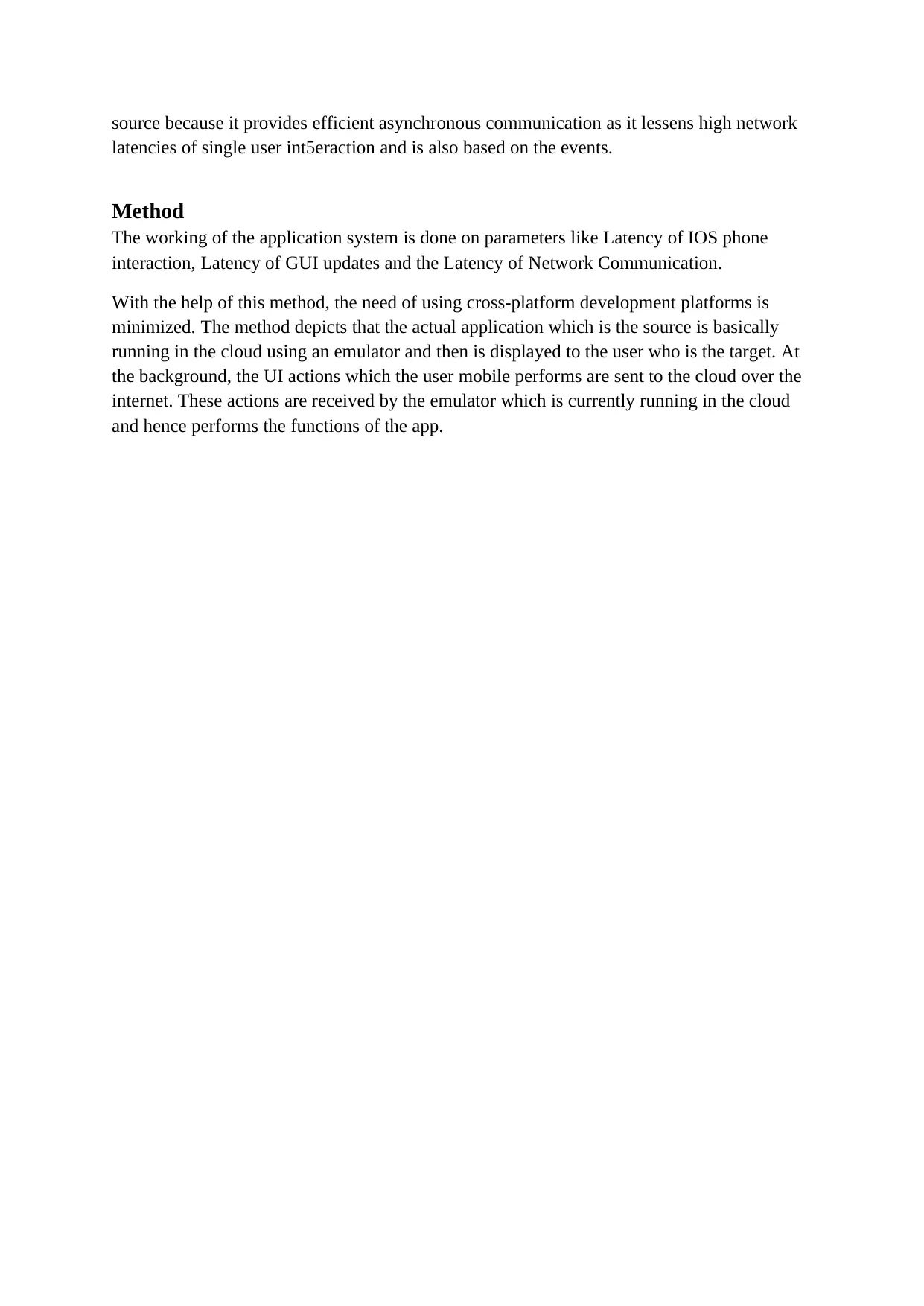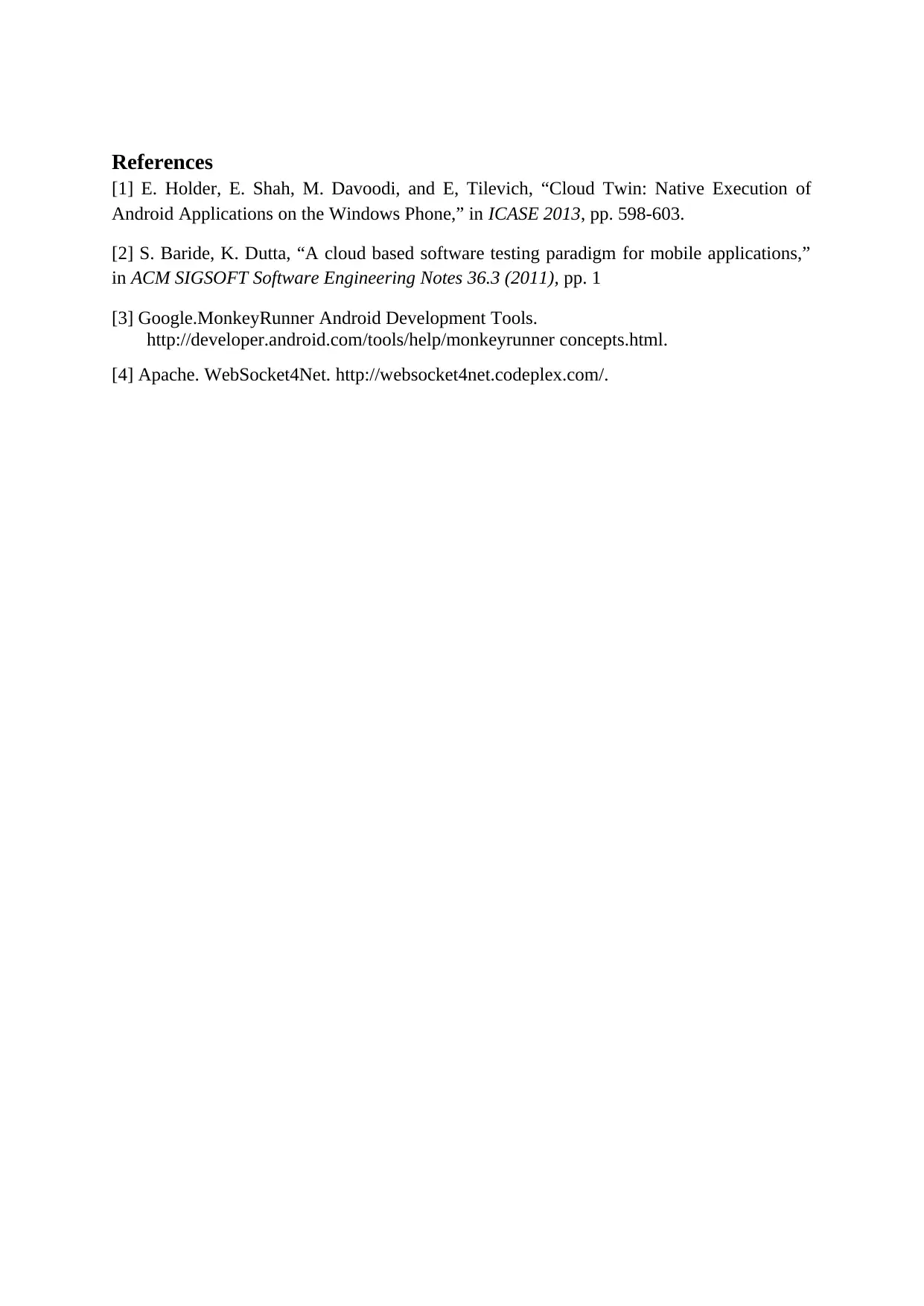Design and Methodology for Cross-Platform Mobile Applications Project
VerifiedAdded on 2021/06/17
|5
|765
|116
Project
AI Summary
This project focuses on the design and methodology of developing cross-platform mobile applications to reduce development time and costs. The design involves a source application (Android), a target application (iOS), and a server, where the source application's UI is converted and user operations are processed. The system uses Aspect Oriented Programming (AOP) to capture UI instances, XML structures for UI mapping, and an emulator to run the source application. The target application utilizes Swift, with WebSocket4Net for data transmission between the source and target. The methodology analyzes latency of IOS phone interaction, GUI updates, and network communication. This approach aims to minimize the need for separate cross-platform development platforms by running the source application in the cloud and displaying it to the user, with UI actions sent to the cloud for processing.
1 out of 5












![[object Object]](/_next/static/media/star-bottom.7253800d.svg)